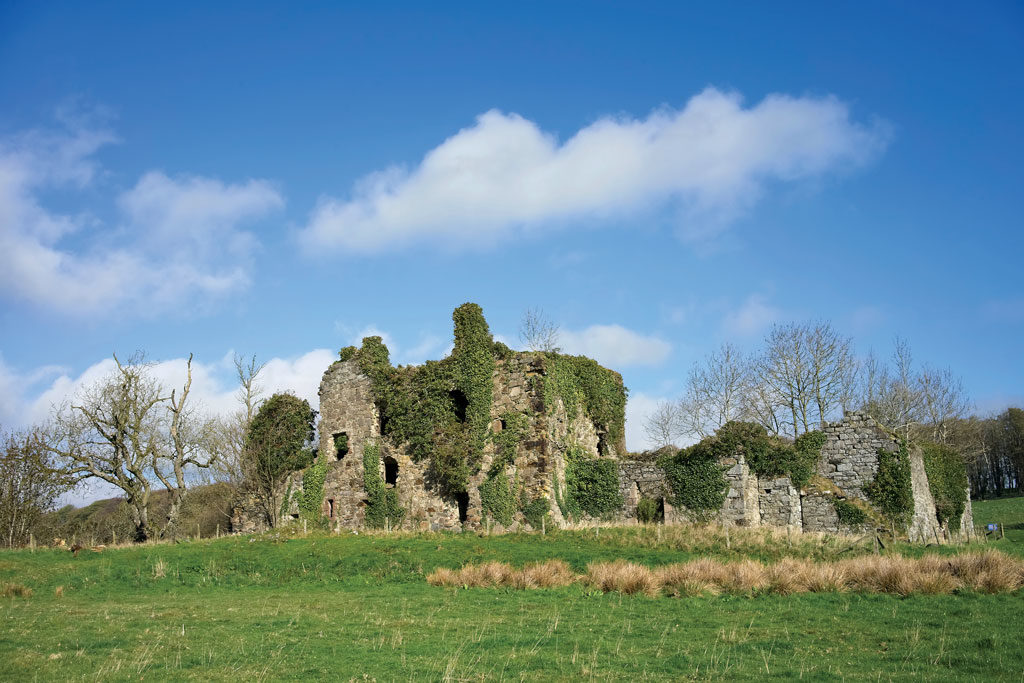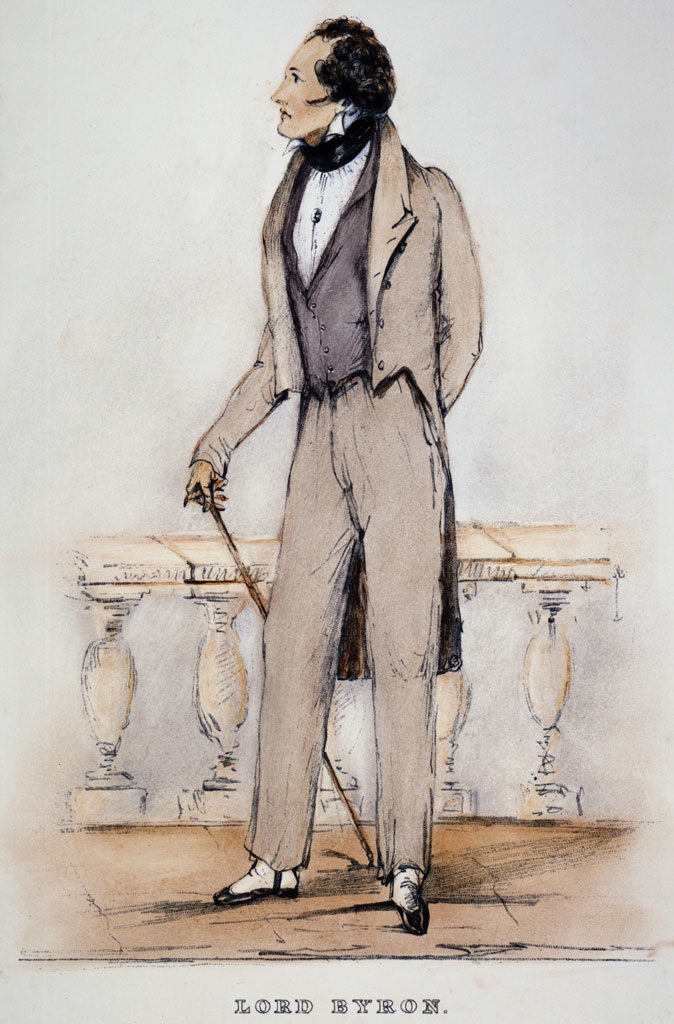We investigate the little-known Scottish roots of one of England’s most celebrated Romantic poets and discover Lord Byron’s life in Scotland
MORE FROM SCOTLAND MAGAZINE
Given his reputation as the most English of the Romantic poets, it comes as something of a surprise to find that the family background of George Gordon, Lord Byron, was in fact Scottish.
Although his father, a licentious rogue known as ‘Mad Jack’ Byron, was English, his mother, Catherine Gordon, was a Scot and an heiress to boot; the inheritor of a substantial portion of the family fortune – around £30,000 – and Gight Castle in Aberdeenshire, as well as becoming the 13th Laird of Gight.
The family was widely believed to be cursed. Gight Castle was a bleak, miserable place that had been built in the 16th century, and had been commensurate with whisperings of witchcraft and ill-doing ever since then.
The grimmest of all the stories about Gight was that, in the Covenanting Wars of 1644, the laird, Lewis Gordon, had hidden his jewels in the nearby basin, Hagberry Pot.
When Gordon asked one of his factotums to retrieve the jewels, the shaken young man returned and claimed that Satan himself guarded the treasure. However, the laird was no less intimidating a figure than Lucifer, and so the hapless diver was sent back once again to Hagberry Pot. The jewels were never seen again, but the young man’s body reappeared a few minutes later, neatly severed into four pieces. His spirit was said to roam haplessly round the castle, seeking desperately to find his missing body and lasting peace.

Unsurprisingly, Catherine wished to escape from this bleak prison, and so she headed to Bath in 1785, where she met her future husband, and after a brief courtship, they married almost immediately. It did not take long for Catherine to realise her husband was a profligate wastrel, and, shortly after her son was born on 22 January 1788, they headed up to new and less impressive lodgings in Queen Street, Aberdeen.
While their new Scottish home was hardly the cosmopolitan centre that London and Bath had been – Catherine complained that a bonnet “was out of fashion in London before it arrived [there]” – it was not devoid of culture, boasting playhouses and bookshops and a thriving port that brought trade (and money) to the city. After her useless husband left Scotland for France, where he eventually died of tuberculosis in 1791, Catherine and her son were left to fend for themselves, and when she learnt of Jack’s death she is said to have howled so violently and piteously that her lamenting for her ‘dear Jonnie’ could be heard in the street.
Given their reduced circumstances, the two of them moved from Queen Street to the main road, Broad Street, and lived on the first floor of a house there along with their maid, Agnes Grey. Byron was troublesome even from a young age; already self-conscious about his lame foot, a result of his botched delivery, he once attacked another nurse who spoke patronisingly of his deformity, crying “Dinna speak of it!” At this point, he spoke with his mother’s strong Scottish accent, something that he would soon drop.
A happier occurrence was that Catherine joined the local subscription library, and encouraged her son to read widely and inquisitively.

This nascent interest in learning was helped by Byron’s being sent to a local school run by a man named Bower, which was “a mixed school of good esteem though small and pretentious.” Catherine, recognising that her son could potentially be troublesome, asked Bower to make sure that her son was “kept in about”, or in check.
It would be Bower who was responsible for his early spiritual education in thought, word and deed. He did not quite succeed, however. Byron was then transmitted to the care of a new master, a clergyman named Ross, under whom he made what Byron himself described as “astonishing progress”.
Shortly after, Byron was removed from his tutors and sent to the local grammar school, where he was given the rudiments of a classical education – or as he described it later, “Latin, Latin, Latin”. It was not a life that he relished; he later claimed that as a young boy, he hated poetry.
Catherine, however, had grand ambitions for her son, and Aberdeen Grammar School did not have the cachet that the English public schools possessed.
In the meantime, Byron contracted a dose of scarlet fever, and developed what would be the first of many grand passions, this time for his cousin, Mary Duff, who lived nearby and who he encountered at a dancing school.
Aberdeen was also important for his development from a cultural perspective. Byron visited the local playhouse from a young age, and at the age of nine saw a production of Romeo and Juliet, with an excerpt from The Taming of the Shrew appended to it.
Byron, already showing a tendency to challenge expected norms, responded to the actor playing Petruchio’s line “Nay, then, I swear it is the blessed sun” by standing on his chair and shouting “But I say it is the moon, sir!”
Yet relations between mother and son become fraught, because as a boy of great intelligence and rebelliousness he enjoyed causing trouble for its own sake. Byron later recalled that, while still in Aberdeen, “(my mother and the maid) once in one of my silent rages wrenched a knife from me, which I had snatched from table at Mrs Byron’s dinner…and applied to my breast.” The dramatic force of the image is only undermined by its absurdity.
Upon his 10th birthday, Byron became, almost by accident, the 6th Baron Byron of Rochdale, and the family left Aberdeen for Newstead Abbey in Nottinghamshire, the ancestral home of the Byrons.
His Scottish heritage remained a vital part of Byron’s life and legacy, especially given the importance of the literary periodical the Edinburgh Review; not for nothing was his first major satire from 1809 entitled English Bards and Scotch Reviewers, acknowledging, however reluctantly, the importance and influence of a country that would remain an integral part of his life and work until he died in 1824.
MORE FROM SCOTLAND MAGAZINE

SCOTLAND MAGAZINE
Published six times a year, every issue of Scotland showcases its stunning landscapes and natural beauty, and delves deep into Scottish history. From mysterious clans and famous Scots (both past and present), to the hidden histories of the country’s greatest castles and houses, Scotland‘s pages brim with the soul and secrets of the country.
Scotland magazine captures the spirit of this wild and wonderful nation, explores its history and heritage and recommends great places to visit, so you feel at home here, wherever you are in the world.